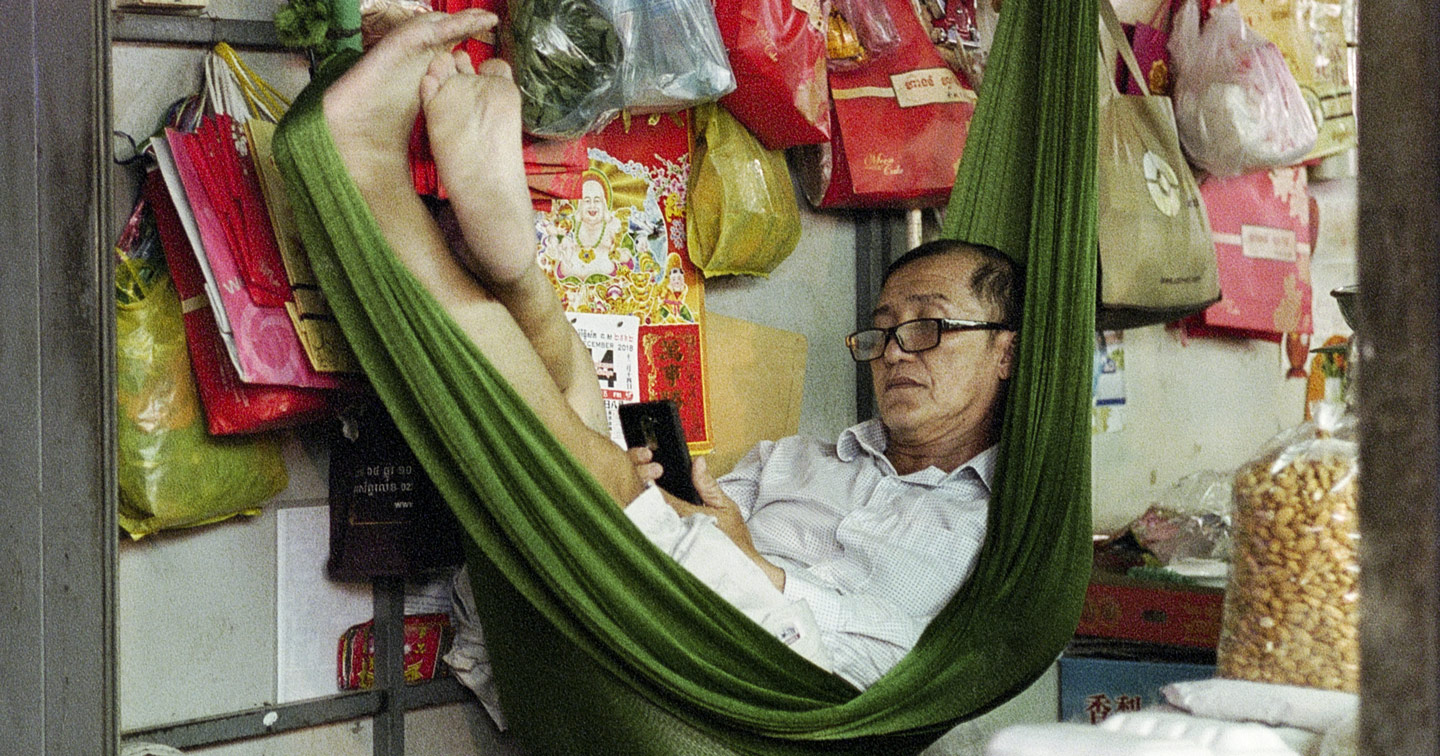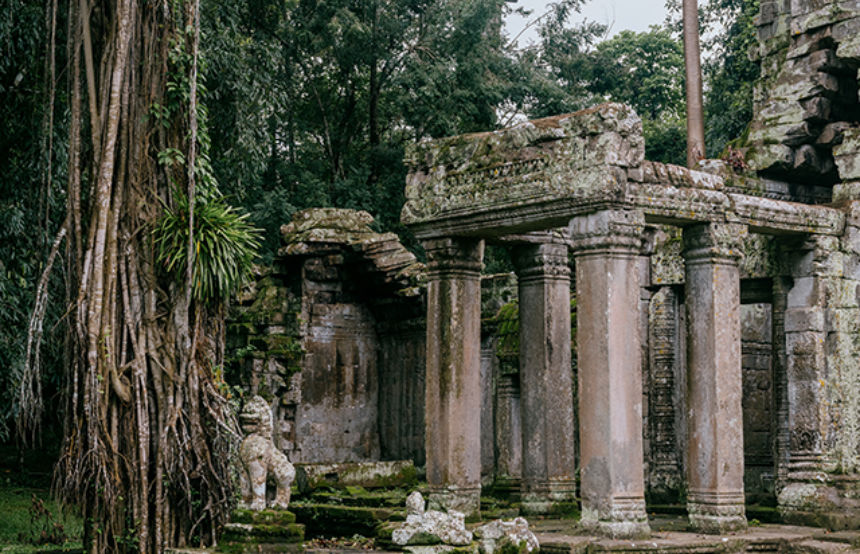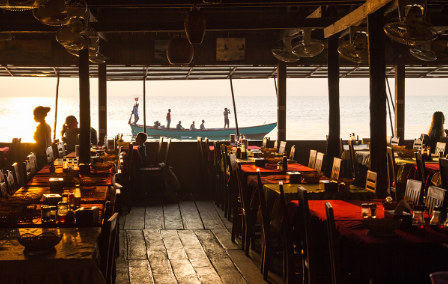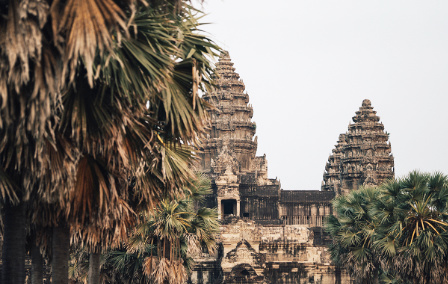Published 4th Oct. 2023
Reading time
Over the years, travel has become inextricably linked to the concept of sustainability – and for good reason too. With the pandemic bringing tourism to a grinding halt, we were forced to evaluate both the positive and negative impacts of travel, leading us to further cement one of our core ideas – that travel should be a force for good. When it comes to sustainable tourism in Cambodia, there’s a multitude of ways to ensure that holidays here promote meaningful encounters for visitors and local alike. We believe in Kintsugi Travel, piecing back the mess made by the pandemic into something better than before. Sustainable tourism doesn’t have to just be something you hear about – making it a reality is a wholly enriching experience, so we’ve laid out some key ideas that you can implement into your next trip to this magnificent country.
There’s no question that tourism can be a force for good – jobs are created and the local economy strengthened, with visitors learning to be more culturally sensitive as they engage in different countries’ lifestyles. However, the flipside is overtourism – mass crowds can cause environmental damage, cultural erosion and a strain on resources. So, what’s the solution? Practice undertourism instead. Bypass the hotspots, step off the tourist trail and make a beeline for lesser-visited (but not less amazing) destinations. Cambodia, is a prime place to support undertourism. The country sees far less tourists than the neighbouring countries of Thailand, Vietnam, Indonesia, Malaysia and Singapore, but is by no means any less worth visiting. The country hosts a plethora of hidden gems from limestone caves in the Bokor mountains to the dinky city of Kampong Chang. Lesser-known temples and stretches of verdant rice paddies can be explored with a sense of secret seclusion, all while never being too far from iconic tourist spots such as Angkor Wat.
Our concept of Philantourism is a simple one to get behind – it involves choosing where to travel based on which places will see the most benefit from you being there. We believe travel should be a force for good, supporting local communities by spending money on local businesses. In Cambodia, tourism is a vital ingredient in the economic growth of the country. It contributes 11.5% to gross domestic product and sustains over 780,000 jobs – more than 12% of total employment. It’s a win for everyone – you can enjoy the magical temple complexes, explore the wildlife rich jungles and feast on delectable cuisine all in the knowledge that you’re helping to keep the country’s economy thriving and promoting sustainable tourism in Cambodia.
Community Based Tourism is an important component of sustainable tourism. It’s all about partaking in experiences that are owned by local communities in order to ensure the economic benefits are remaining within the community itself. These authentic interactions also help develop visitor's understanding of the local culture and way of life. In Cambodia, you could stay in a traditional homestay near the remote Banteay Chhmar temple, visit remote hill tribes on an ethical expedition with the community run Wehh Project, or visit the Osoam Community, an eco-tourism project dedicated to building a sustainable community. The opportunities to use travel as a force for good are endless in Cambodia and shouldn’t be missed on your visit to this unique corner of the world.
Sustainable tourism in Cambodia isn’t just about putting money into local communities, it’s also about immersing yourself in Indigenous cultures and practices, listening to their stories and understanding the challenges they’ve had to face. With fewer than 200,000 Khmer Loeu living in Cambodia, visits from tourists provide a vital opportunity to gain visibility that has been denied for too long. Their future lies in a fragile limbo, at risk of erasure due to over-development of the natural environment, but visiting places of traditional Cambodian culture is a way to have authentic and impactful interactions. A trip to the ‘Iron Kuy’ of Preah Vihear, for example, will see you meeting Kuy blacksmiths who craft traditional daggers and knifes, continuing the tradition that long ago saw the Khmer empire equipped for battle. Yeak Laom Lake in Ratanakiri is a sacred place for the Tompoun people of the region, and the nearby Tompoun community centre has ample information on their cultural practices, sometimes even hosting music performances during festivals. These are all culture rich experiences that truly promote cultural recognition and the act of travelling sustainably.
Written by Evie Buller

Having spent years living, working and travelling in Cambodia, our passionate consultants have a wealth of firsthand knowledge to apply to every aspect of your trip. From designing new ways to tour ancient Angkor without the crowds to arranging sunset drinks with a view, we tailor each detail to you. Whether visiting the jungle, cities or coast, we work with some of the best guides in Cambodia, who can bring your dream trip to life. Be it organising a temple treasure hunt or a Khmer cooking class, our teams always go the extra mile. In-country, our helpful Concierges are just a call away to ensure your trip runs smoothly.
ENQUIRE NOWPractical advice and inspiration for your next trip

Southeast Asia is a favourite for first-time travellers – safe, welcoming and easy to explore. Yet all too often, Cambodia is the casualty of the Indochina loop, with many simply dropping in to see the (admittedly awe-inspiring) Angkor before moving swiftly on. On my first visit, I was guilty as charged. But my return visit changed everything. Cambodia, I realised, has come of age. It’s no longer the ‘add-on’ destination, but a country that demands time, rewards curiosity and offers depth, warmth and discovery at every turn.
29th October 2025 - Cambodia Travel Inspiration

It’s no surprise that Cambodia is known as the ‘Kingdom of Wonder’. Whether it’s the awe-inspiring temple complex of Angkor Wat, the postcard-perfect beaches, the characterful capital city of Phnom Penh, or the strength of a nation emerging from tragedy – Cambodia is a spectacular destination. But when it comes to cuisine, Cambodia’s varied culinary traditions are often overlooked in favour of its more prolific neighbours, Thailand and Vietnam.
29th October 2024 - Cambodia Food & Drink

On a recent research trip to Cambodia, our Asia specialist, Meg, discovered the country’s authentic side. From visiting lesser-known Angkor temples to participating in anti-poaching missions, she experienced things many travellers miss out on and is eager for you to be in the know. Read on to discover what made Meg’s trip to Cambodia so memorable… Where did you visit? During my 18 days in Cambodia,
24th June 2024 - Cambodia Travel Tips

Our team of destination experts will get to know you and your unique requirements for your holiday

We work with you to build an ultra-personalised holiday itinerary with your choice of accommodation, experiences and activities

All of our holidays include little extras designed to make a big difference to your trip, from fast-tracking you through airport check-in and security to our network of local Concierges